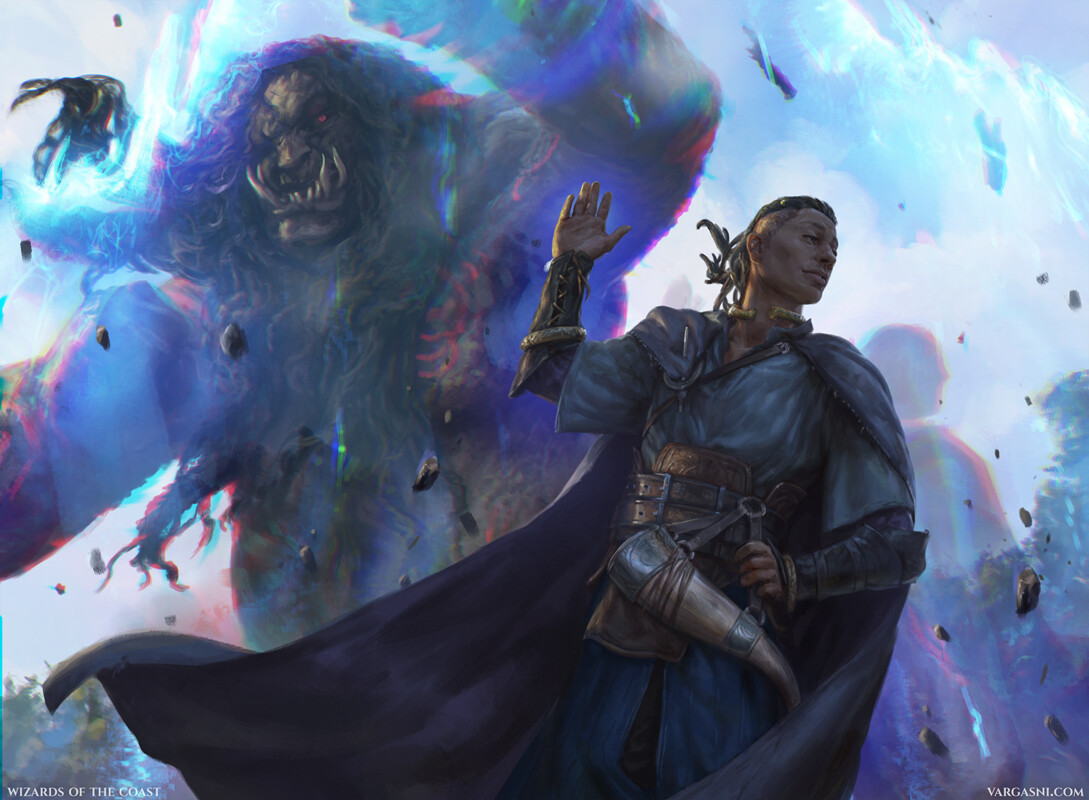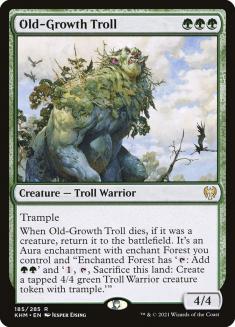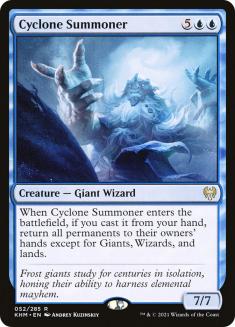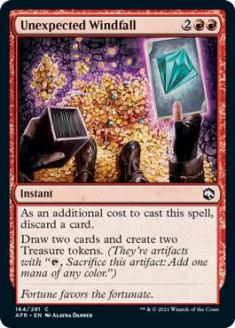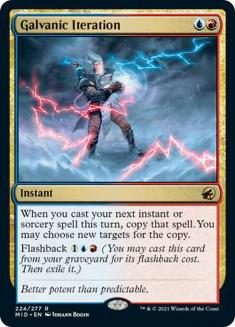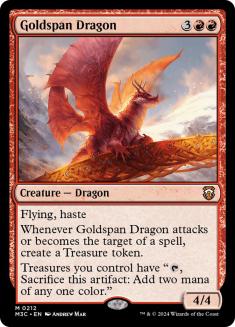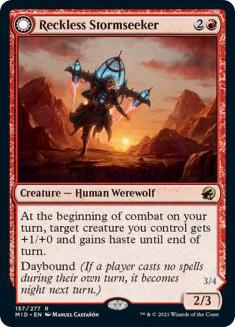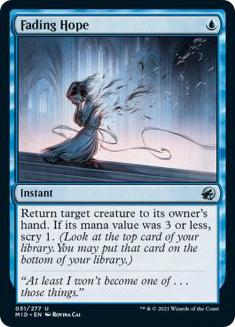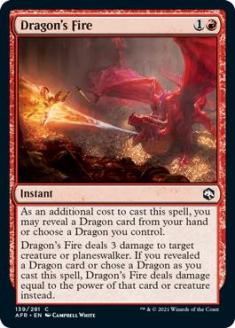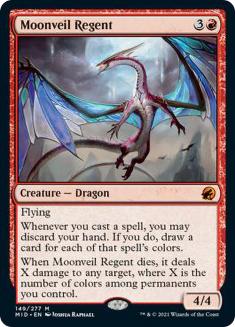This weekend was a celebration of professional Magic. World Championship XXVII was a great spectacle even given the limitations of the Arena client. Several former and rising stars proved under pressure that they are truly great players. Yuta Takahashi, a fan favourite with a distinctive personal style and infectious love of the game, was crowned a worthy World Champion.
It was also a farewell to professional Magic. There’s no professional scene to have Takahashi as its ambassador. Viewers who might dream of following in his footsteps don’t know what that would mean or how it is even possible. Players who felt that competitive spark reignite have to find their own outlets for it rather than trying to climb an official ladder together.
This all amounts to a strange context for making sense of these results. I’ll simply share what stood out to me.
Limited: Why Here? Why Now?
In the pre-Arena Pro Tour days, you could not afford to ignore Limited if you wanted to be a professional Magic player. Scroll down the text coverage for any Pro Tour and you’ll find players who took Constructed by storm but were forgotten by Monday because their failure in Limited kept them off the Sunday stage. When every Constructed format either presented a new and unique challenge or was mostly solved before the tournament even started, being a Limited expert was the biggest edge you could hope for.
With the move to Arena, this all changed. Magic World Championship XXVII was our first opportunity to watch high-stakes Limited since… World Championship XXVI. The competitors here are fantastic, well-rounded players, but the last year of Organized Play — and thus the qualification process for Worlds — selected entirely for success at Constructed. Limited has been an extracurricular activity for any aspiring professional, and testing time for any tournament before this one had to be spent elsewhere. Seasoned veterans like previous champion Seth Manfield and defending champion Paulo Vitor Damo da Rosa were renowned for their Limited skill, even among players who had a reason to care about that, and they enjoyed a substantial advantage here over players who just discovered that reason when they qualified for the biggest tournament of their lives.
The timing of this shift was especially unfortunate. The Constructed formats that saw play at every tournament were often narrowly predictable at best and completely imbalanced at worst while Limited was living its best life. Throne of Eldraine has a well-earned reputation for ruining every Constructed format, with that damage only just healing now, but drafters got to ignore all of that and enjoy a well-crafted Limited experience. Debate rages over the place of Alrund’s Epiphany or Esika’s Chariot in Standard, but all the other cards in Kaldheim added up to a deep and popular Draft format. Innistrad: Midnight Hunt doesn’t quite live up to some of these other sets or previous visits to Innistrad for Limited, but it offers a fine format to showcase in the last hurrah for professional Magic.
The amateur Limited enthusiast has access to more useful resources now than ever. Streamers and podcasters offer a range of perspectives on the format from Day 1. Data aggregators like 17Lands.com allow for unprecedented, large-scale analysis. At the same time, there is a total lack of opportunities to rigorously test any theory about the format. The Pro Tour just after a set’s release was the proving ground for Limited innovation and put ideas about the format into a coherent narrative; we remember Christian Calcano slicing through the field with Slither Blade to Top 8 Pro Tour Amonkhet or Sam Black breaking Modern Horizons Limited in Barcelona more than someone on Twitter hitting Mythic by forcing some archetype over and over.
The removal of Limited from high-level play coincides with the expulsion of many Limited innovators and authorities from this environment. Jon Finkel wasn’t part of the Rivals/MPL structure; Marcio Carvalho and Mike Sigrist were but had to exclusively play Constructed. We can watch Ben Stark draft, but how often are his opponents in the Arena queues forcing him to draft the hard way?
Additionally, the lack of a Draft portion in any online tournament or the traditional eight-person pod structure of paper play means that the Arena generation only knows a specific drafting method that results in very different incentives and outcomes. The 17Lands data gives you new insight into one form of Innistrad: Midnight Hunt Draft but not the one you see as part of this fight for any game’s biggest title.
All this makes me wonder: what’s the point? Previously, Limited at the Pro Tour carried the implication that to be a pro you needed to master this aspect of the game; now, a year of exclusively Constructed tournaments has overturned that. There’s no story to build upon; none of these competitors excelled at another Draft format to book their seat here or are known as Limited specialists. Marcio Carvalho opened the door to his first World Championship finals appearance in 2016 as the Draft Master on the Pro Tour; that label seems ludicrous now.
If you don’t play Limited, this opening segment was impossible to follow and would temper your excitement for the rest of it. If you do play Limited in its most common form on the default digital platform, what you see here is substantially different! When Limited was a fixture of the Pro Tour, it was popular with a small and enfranchised crowd but unpopular with the audience at large; the viewing figures were always much lower during Limited and it took time for those to recover. Whatever your interpretation of that — is Limited doomed to be less accessible and popular, or is it just a question of presenting it properly? — it’s tough to see how including Limited at the World Championship is consistent with any prior assumptions over this period about the audience for competitive Magic.
Once you do decide to include it… it’s a minor part of the tournament! Three rounds of Draft pale into comparison to seven rounds of Standard (as well as the Top 8). It makes sense for competitors to focus their energy on Standard and then turn their attention to Draft, with the understanding that the others are doing the same thing.
Yuta Takahashi is the perfect World Champion for Magic in so many ways, but becoming World Champion by going 0-3 in Draft and 11-0 in Standard is the perfect summary of what mattered in this era of competitive Magic.
Standard: One Step Forward, Two Steps Back
Going into Magic World Championship XXVII, Standard appeared to be a two-and-a-half-horse race with Alrund’s Epiphany in one corner, Esika’s Chariot in the other, and Usher of the Fallen as the rear legs of a dark horse somewhere in there. As with Limited, there was no reason to put much stock in any pre-World Championship data. This one tournament would set the parameters of Standard before Innistrad: Crimson Vow hopefully reset those once again.
The results were a curious blend of old and new.
Mono-Green Aggro❄ was by far the most important deck in the days before decklists were due, dominating the Standard Challenges on Magic Online and the SCG Tour Online Championship Qualifier. This didn’t ensure its success at Worlds but it did make it a necessary litmus test for other decks and a solid default choice if you couldn’t find anything better.
Mono-Green Aggro❄ is a fast, consistent, and powerful deck, but it’s a known target with little further room for adjustment. If the Alrund’s Epiphany decks should improve somehow against Mono-Green, it has no clear ways to return the favour. You’re locked into applying pressure using resilient threats and Snakeskin Veil to punch through interaction. That recipe is good enough for now, but what if Izzet Epiphany finds a way to go bigger and faster?
Creatures (4)
Lands (23)
Spells (33)
- 2 Duress
- 1 Bloodchief's Thirst
- 2 Spikefield Hazard
- 1 Cinderclasm
- 2 Jwari Disruption
- 4 Alrund's Epiphany
- 1 Demon Bolt
- 1 Prismari Command
- 4 Expressive Iteration
- 1 Power Word Kill
- 2 Galvanic Iteration
- 3 The Celestus
- 1 Burn Down the House
- 3 Memory Deluge
- 1 Cathartic Pyre
- 4 Fading Hope
Sideboard

Cyclone Summoner began circulating publicly late in the week as a prospective solution to Mono-Green Aggro❄. Rather than relying on chaining copies of Alrund’s Epiphany with all the setup required or hoping your Burn Down the House lines up against the threats they drew, you can be guaranteed to reset their battlefield (which will take several turns to rebuild as their three-drops and four-drops are their scariest threats) with a creature larger than anything that might come back down. The Grixis Epiphany deck that Jan-Moritz Merkel took to the Top 4 leans on Summoner as its post-sideboard plan against Mono-Green, fueled by another key breakthrough:
Lands (23)
Spells (37)

Unexpected Windfall lived up to its name for Ondrej Strasky, who cruised through the Swiss undefeated with Stanislav Cifka’s build of Izzet Epiphany featuring four maindeck copies of this innocuous instant. Windfall curves naturally into Turn 5 Summoner, fast enough to race all but the best draws of Mono-Green or Mono-White Aggro❄ (which is better at unloading again post-Summoner and can use Elite Spellbinder to ‘turn off’ Summoner, as it only triggers if cast from your hand).
The Sperling/Merkel/Nassif/Kassis list had one copy of Windfall in the sideboard to pair with their Summoners but no team fully merged their chocolate and peanut butter here. If the Czech list of Izzet Epiphany becomes stock, a heavy focus on Windfall and Summoner together will cement a Mono-Green matchup already improved by the choice of Windfall over more conventional but clunky alternatives like Memory Deluge.
The crucial realization with Unexpected Windfall is that it also excels in mirrors, which are first and foremost about getting ahead on mana to let you pick and win stack battles at a time of your choice. End-step Galvanic Iteration into Windfall gives you four new cards and four mana in Treasures (while hedging against counters that trade well with Windfall) to set up flashback Iteration into Alrund’s Epiphany far earlier than would be possible normally. Windfall’s burst of speed against aggro and ability to cash in cards also makes it easier to maindeck mirror aces like Test of Talents and lets you cycle through dead removal and bounce spells in those mirrors.
Creatures (8)
Lands (20)
Spells (32)

Yuta Takahashi’s comeback story was only matched by his trusty steed’s. Goldspan Dragon was poised to define Standard post-rotation until one natural perch in Gruul Aggro was pushed out of the format and its former home in Izzet Dragons discarded these midrange elements to become a combo-control deck fully focused on Alrund’s Epiphany.
Ignoring this conventional wisdom, Takahashi managed an astonishing 11-0 clean sweep of the Standard rounds with an Izzet Dragons list that could have come from Week 1 of this format, yet with the careful tuning that is a signature of the flexible blue decks he has used to make a name for himself across every format from Standard to Vintage. The split of one Dissipate and one Saw It Coming can be a sign that someone is ‘just trying new things’ — or that they have tried everything and know exactly what they want. Takahashi has earned the benefit of the doubt there a dozen times over.
Goldspan Dragon’s story doesn’t end there. The finals featured the full eight copies with the other four in an inspired list from runner-up Jean-Emmanuel Depraz:
Creatures (21)
- 4 Magda, Brazen Outlaw
- 4 Goldspan Dragon
- 4 Jaspera Sentinel
- 4 Prosperous Innkeeper
- 3 Moonveil Regent
- 2 Reckless Stormseeker
Lands (22)
Spells (17)

This Temur list is another throwback that isn’t far removed from the very first winning decklist of this Standard format:
Once you swap out mopey removal for counters to fight the Epiphany menace, you have most of what Depraz took to yet another stellar finish. The Jaspera Sentinel + Magda, Brazen Outlaw shell that powered Gruul Aggro in the last format and the first days of this one was pushed aside by Mono-Green Aggro, which had a better formula against other green midrange decks with the best removal spell in Blizzard Brawl and cleaner mana. Depraz recognized that the blue interaction was necessary to fight the next generation of Epiphany decks and that the Gruul base was the way to support it, with Sentinel and Magda each conveniently offering additional blue sources. Prosperous Innkeeper on top of these may seem excessive, but this package gives you the speed you need to beat other creature decks as well as letting you develop threats while holding up interaction against Izzet Epiphany.
When the Izzet decks are more interested in bouncing your creatures than killing them, there’s a much bigger premium on haste threats and you have to turn to red for those. Reckless Stormseeker can be that threat itself, turns any other creature into one, and forces Izzet to commit mana on its own turn to stop Stormseeker upgrading into a cheaper Reality Smasher. Likewise, Goldspan Dragon threatens a fast burst of damage while holding up blue spells and giving you a resource back if it does get bounced.
Once you embrace Goldspan Dragon, you might expect others to reach the same conclusion. The best instant-speed removal against Goldspan Dragon that doesn’t have big blindspots elsewhere is Dragon’s Fire, which encourages you to play even more four-power Dragons like Moonveil Regent for this upgrade. Four damage for two mana is the perfect rate against the main creature deck in Mono-Green Aggro❄ and this mix of cheap removal and large flyers is a strong recipe there. Depraz beat Sam Pardee three (!) times on Sunday to clinch his spot in the Top 4.
Judging by the Twitter chatter I’m not alone in feeling excited about high-level Magic again after being glued to Worlds all weekend. I just wish there was any of it left to follow or aspire to.

